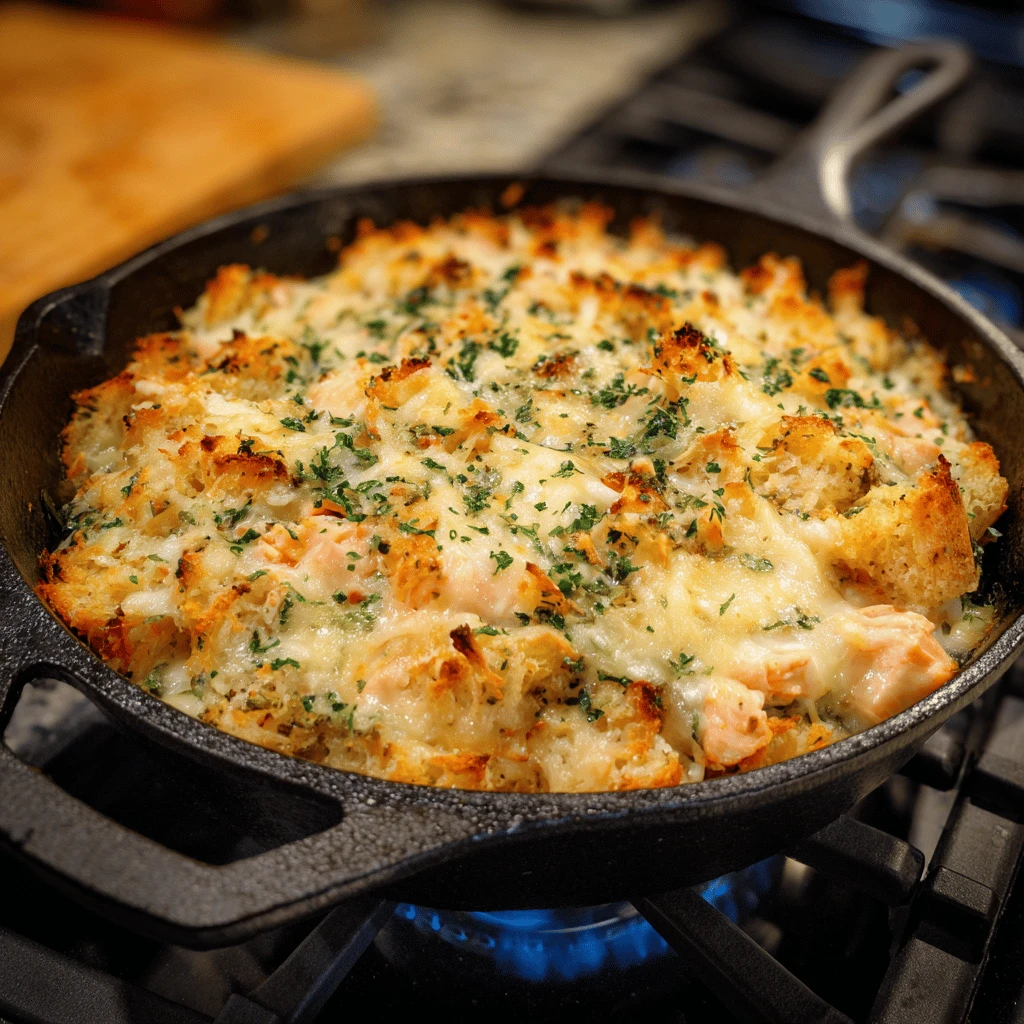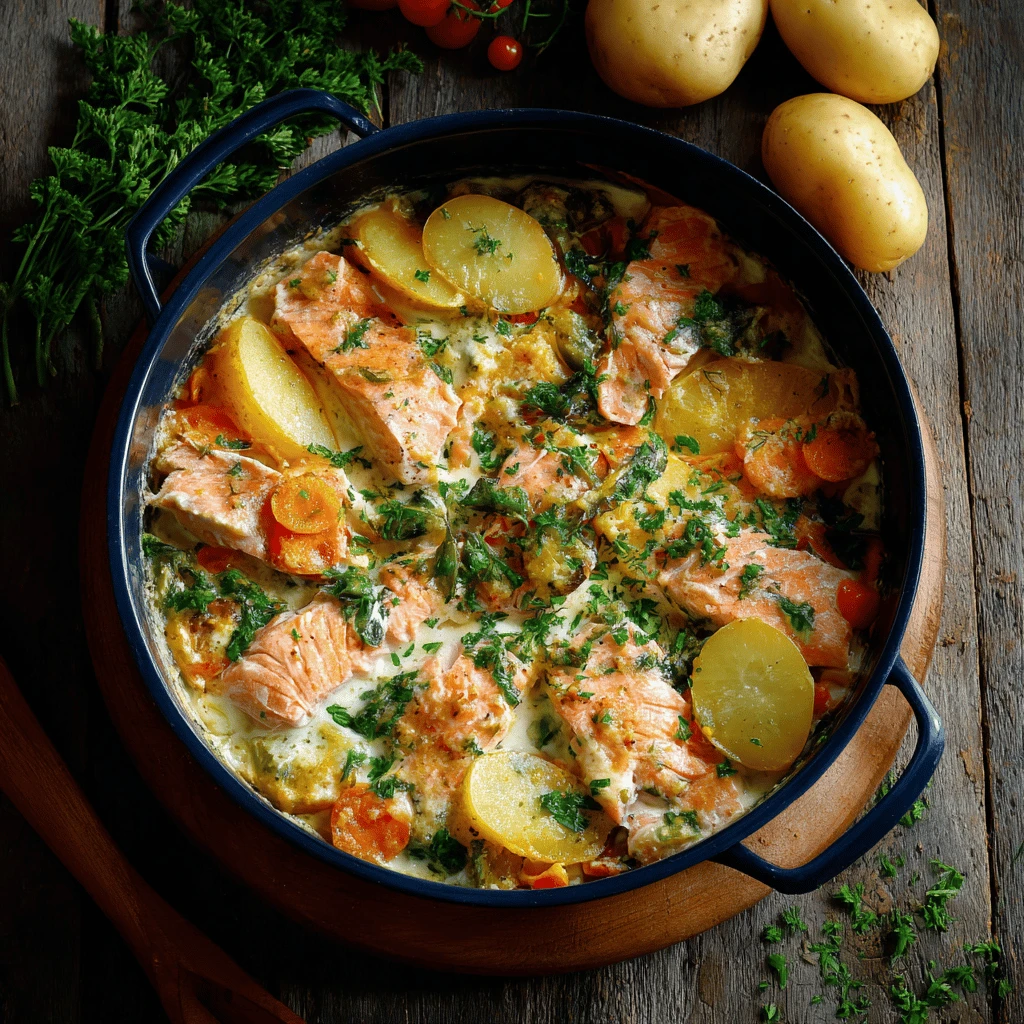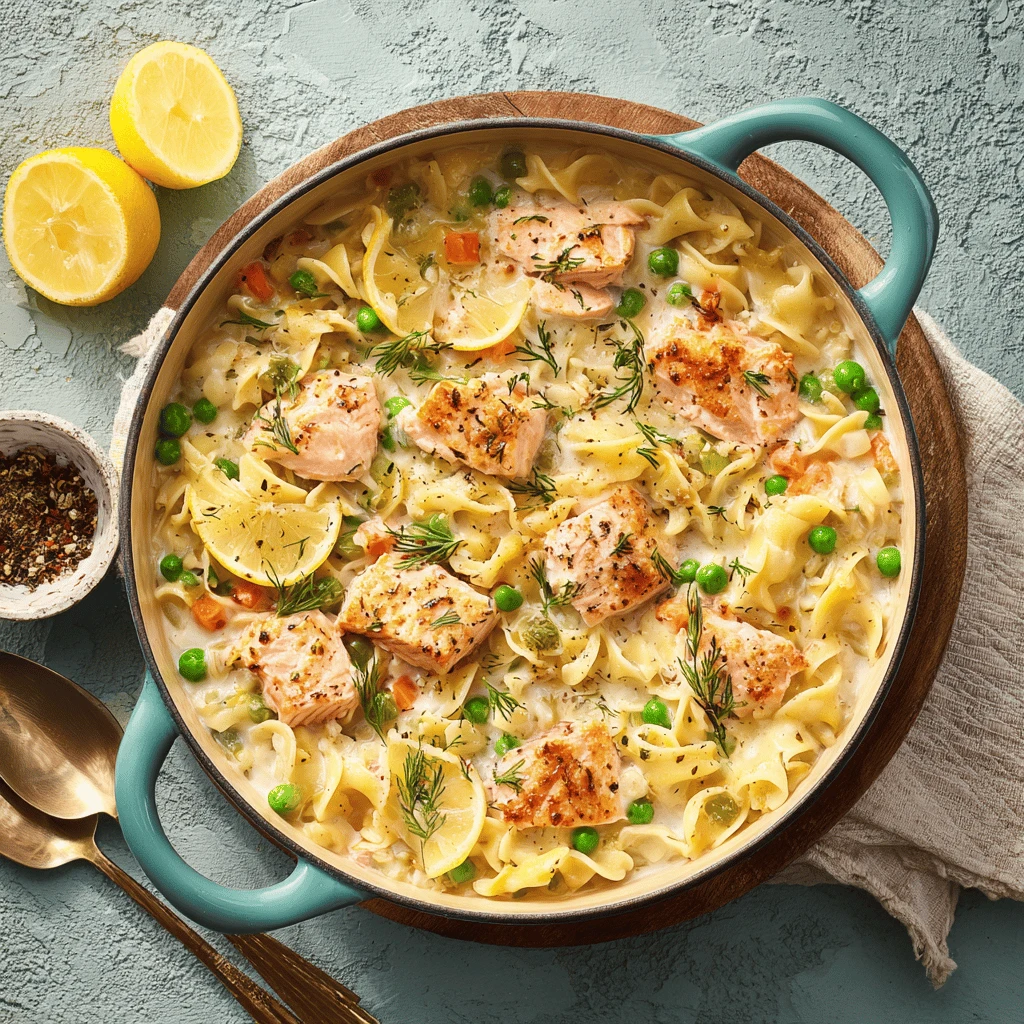Kid-Friendly One-Pot Salmon Casserole
Salmon casserole is a classic comfort food, but it can be a tough sell for picky eaters. This kid-friendly one-pot salmon casserole recipe simplifies the process and elevates the flavor, making it a dish the whole family will love. It’s quick, easy, and minimizes cleanup – a win-win for busy weeknights!
Why This One-Pot Salmon Casserole Works
Many salmon casserole recipes are outdated or lack appeal for modern palates. This recipe solves those problems by:
- Using fresh (or frozen) salmon: This provides a much fresher and more flavorful base than canned salmon, although you can substitute in a pinch.
- Emphasizing creamy, comforting flavors: A cheesy sauce, tender pasta, and optional additions like sweet peas or corn create a familiar and satisfying meal.
- Streamlining the cooking process: Cooking everything in one pot reduces mess and saves time.
- Offering customizable options: You can easily adapt the recipe to suit your family’s preferences, adding vegetables or adjusting the seasoning as needed.
This recipe transforms salmon casserole from a dated dish into a healthy and delicious meal that even the pickiest eaters will enjoy.
Key Ingredients and Variations
The beauty of this one-pot salmon casserole lies in its adaptability. Here’s a breakdown of the key ingredients and suggestions for variations:
- Salmon: Fresh salmon is the star of the show. Look for skinless fillets for ease of preparation. Frozen salmon, thawed completely, also works well. Canned salmon (drained and flaked) can be used as a last resort, but it will significantly alter the flavor and texture.
- Pasta: Small pasta shapes like elbow macaroni, ditalini, or small shells work best. They cook quickly and evenly in the sauce. For a gluten-free option, use gluten-free pasta.
- Vegetables: Peas, corn, and carrots are classic additions that add sweetness and nutritional value. Other options include broccoli florets, zucchini cubes, or spinach (added towards the end of cooking).
- Cheese Sauce: A simple cheese sauce made with butter, flour, milk, and cheddar cheese forms the creamy base of the casserole. You can use different cheeses, such as Gruyere, Monterey Jack, or a blend of your favorites. For a richer flavor, add a touch of cream cheese.
- Aromatics: Onion and garlic provide a savory base for the casserole. You can also add other herbs and spices, such as dill, parsley, paprika, or a pinch of red pepper flakes.
- Broth/Liquid: Chicken broth or vegetable broth provides the necessary liquid for cooking the pasta. You can also use water, but the broth adds more flavor.
Variations:
- Spicy Salmon Casserole: Add a pinch of red pepper flakes or a dash of hot sauce to the cheese sauce.
- Creamy Tomato Salmon Casserole: Add a can of diced tomatoes (drained) to the pot along with the other ingredients.
- Vegetable Packed Salmon Casserole: Increase the amount of vegetables or add a wider variety of vegetables.
- Deluxe Salmon Casserole: Top the casserole with buttered breadcrumbs or crushed crackers before baking for a crispy crust.
Remember to adjust the cooking time and liquid amount as needed based on the specific ingredients you use.
Step-by-Step Instructions for One-Pot Success
This recipe is incredibly easy to follow. Here’s a detailed breakdown of the steps:
1. Sauté Aromatics: In a large pot or Dutch oven, melt butter over medium heat. Add chopped onion and cook until softened, about 5 minutes. Add minced garlic and cook for another minute until fragrant.
2. Add Salmon and Pasta: Add the pasta, vegetables (if using), broth, salt, and pepper to the pot. Gently place the salmon fillets on top of the pasta.
3. Simmer and Cook: Bring the mixture to a boil, then reduce heat to low, cover, and simmer for about 15-20 minutes, or until the pasta is cooked through and the salmon is cooked to an internal temperature of 145°F (63°C). The exact cooking time will depend on the type of pasta you use.
4. Shred Salmon and Make Cheese Sauce: Remove the salmon from the pot and set aside to cool slightly. Use a fork to flake the salmon into bite-sized pieces. In a separate bowl, whisk together melted butter and flour until smooth. Gradually whisk in milk until there are no lumps. Microwave or heat on the stove until the sauce begins to thicken. Remove from heat and stir in the cheddar cheese until melted and smooth.
5. Combine and Bake (Optional): Stir the cheese sauce and flaked salmon into the pasta mixture. Season with salt and pepper to taste. At this point, you can either serve the casserole directly from the pot or transfer it to a baking dish. If baking, top with buttered breadcrumbs or crushed crackers (optional) and bake in a preheated oven at 350°F (175°C) for 15-20 minutes, or until golden brown and bubbly.
6. Serve and Enjoy: Let the casserole cool slightly before serving. Garnish with fresh parsley or dill, if desired. Serve with a side salad or steamed vegetables for a complete meal.
Tips for Success:
- Don’t overcook the pasta: Check the pasta for doneness a few minutes before the suggested cooking time to avoid a mushy casserole.
- Use a mild cheddar cheese: Sharp cheddar cheese can overpower the delicate flavor of the salmon.
- Adjust the seasoning to your taste: Don’t be afraid to experiment with different herbs and spices to create a flavor profile that your family will love.
Serving Suggestions and Make-Ahead Tips
This one-pot salmon casserole is a complete meal in itself, but it can be enhanced with the right accompaniments. Here are some serving suggestions:
- Side Salad: A simple green salad with a light vinaigrette provides a refreshing contrast to the richness of the casserole.
- Steamed Vegetables: Steamed broccoli, green beans, or asparagus are healthy and easy additions.
- Garlic Bread: Crispy garlic bread is always a welcome accompaniment to any pasta dish.
- Crusty Bread: A slice of crusty bread is perfect for soaking up the creamy sauce.
Make-Ahead Tips:
- Prepare the Cheese Sauce: The cheese sauce can be made ahead of time and stored in the refrigerator for up to 2 days. Reheat gently before adding it to the pasta and salmon.
- Assemble the Casserole: You can assemble the entire casserole (without baking) up to 24 hours in advance. Cover it tightly and store it in the refrigerator. Add a few extra minutes to the baking time when cooking from cold.
- Freeze the Casserole: For longer storage, the casserole can be frozen. Let it cool completely, then wrap it tightly in plastic wrap and foil. Freeze for up to 2 months. Thaw overnight in the refrigerator before baking.
Frequently Asked Questions (FAQ)
Can I use canned salmon instead of fresh salmon?
Yes, you can use canned salmon, but the flavor and texture will be different. Be sure to drain the canned salmon well and remove any bones.
Can I use different types of pasta?
Yes, you can use different types of pasta, but choose small shapes that cook quickly and evenly. Elbow macaroni, ditalini, and small shells are good choices.
Can I add other vegetables?
Absolutely! Feel free to add your family’s favorite vegetables to the casserole. Broccoli florets, zucchini cubes, and spinach are all good options.
How do I prevent the pasta from sticking?
Stir the casserole occasionally while it is simmering to prevent the pasta from sticking to the bottom of the pot.
How long does the casserole last in the refrigerator?
The casserole will last for up to 3 days in the refrigerator.




